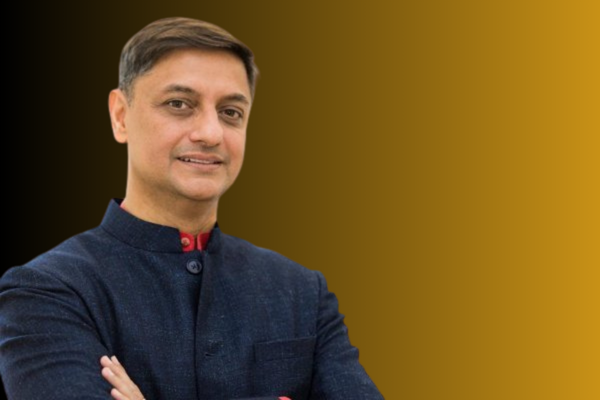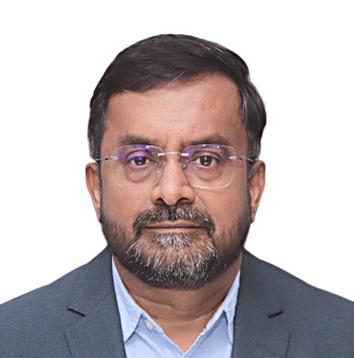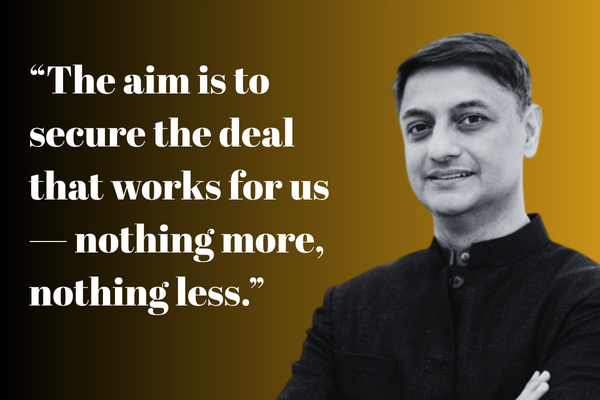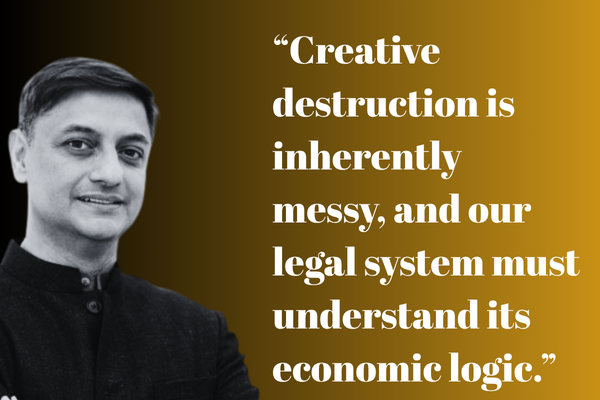.png)
PM Adviser Sanyal Bats for Process Reforms, Plays Down Trump’s Jibes
Sanjeev Sanyal says India’s growth is intact, urges process reforms, and calls TCS layoffs part of healthy tech churn.


Krishnadevan is Consulting Editor at BasisPoint Insight. He has worked in the equity markets, and been a journalist at ET, AFX News, Reuters TV and Cogencis.
August 7, 2025 at 7:20 AM IST
Sanjeev Sanyal, member of the Prime Minister’s Economic Advisory Council believes India’s growth story is far from “dead” despite US President Donald Trump’s recent jibe.
Sanyal pointed to India’s 6.5% growth forecast by the IMF— the fastest among major economies — and said the country had equalled Japan in size and was on course to become the world’s third-largest economy within two years. “It is difficult to call us a dead economy when we are growing two and a half times faster than the United States,” he said.
The former Deutsche Bank global strategist has long argued that India’s next phase of economic transformation lies in what he terms “process reforms”, or fixing the thousands of small inefficiencies that sap productivity but draw less attention than landmark structural reforms like GST or the insolvency code.
He cites everyday contradictions, such as different regulators demanding conflicting specifications for the same business activity, as examples of frictions that can be resolved without political controversy yet deliver significant gains.
In the wide-ranging interview at the Gokhale Institute of Politics and Economics, where he is the Chancellor, Sanyal also addressed the anxiety over technology-led churn in India’s software sector, where Tata Consultancy Services recently announced layoffs affecting 2% of its workforce.
He cautioned against “Luddite interventions” to protect existing jobs, recalling how Kolkata’s resistance to IBM computers in the 1980s only delayed progress while Bangalore embraced the opportunity and became a tech hub. Artificial intelligence, he argued, will create new roles even as it disrupts old ones, and policymakers should focus on cushioning the transition rather than blocking it.
Sanyal called for a cultural shift in attitudes to business failure, especially for entrepreneurs and MSMEs. India’s personal bankruptcy laws remain outdated, he said, fostering stigma around insolvency and discouraging risk-taking. He also warned that post-2008 financial regulations, while necessary for stability, may be constraining credit growth and risk appetite to levels below what a fast-growing economy requires.
At Gokhale Institute, he is experimenting with academic reforms to prepare students for such disruption with practice-based data science programmes to a student-led monetary policy committee that mirrors RBI deliberations. “Education has to move from lecture-based to experiential,” he said.
Here are the edited excerpts.
Click here for the full interview on our YouTube channel.
Q: Trump called India a “dead economy”. How do you see this remark?
A: We should take that comment with a pinch of salt. President Trump has made similarly strong remarks on other issues. Ultimately, one must go by the numbers. The IMF’s latest projections show India as the fastest-growing major economy in the world, with growth around 6.5% compared to the United States at 2.5%. This year India equalled Japan’s economy in US dollar terms, and indications are that within 24 months we will be the world’s third-largest economy. This is partly aided by Germany’s stagnation, but also reflects India’s relative momentum. We are growing faster than almost every other large economy, including China.
Q: As an adviser to the Prime Minister, what would you tell trade negotiators amid rising pushback?
A: India’s rising share of the global economy inevitably invites more friction, even from friendly countries. The key is not to lose our composure. We must clearly define our interests, understand the trade-offs we are willing to accept, and push for outcomes that advance our growth priorities. Negotiations always involve give and take, but we must avoid getting baited into public spats or rhetorical battles. The aim is to secure the deal that works for us — nothing more, nothing less.

Q: India’s growth is stable at 6%. Should policy shift towards acceleration?
A: We are currently growing at about 6% of GDP, which is good by global standards. Naturally, we would prefer 7.5–8% growth. After the COVID rebound, turbulence from wars and tariff disputes forced us to remain restrained. Today, most macro indicators are in a good place. Inflation is near 2%, the current account deficit is below 1%, and financial stability metrics are strong. This gives policymakers room to press the accelerator carefully. The RBI has already cut rates more aggressively, and capital spending by government has been robust in recent months. If the external environment stabilises, we can aim for a higher growth trajectory.
Q: You often stress process reforms rather than only big-bang reforms. Why?
A: India has undertaken several landmark structural reforms in the past — GST, the insolvency code, the inflation-targeting framework, and of course the 1991 liberalisation. There are more structural reforms to pursue, particularly judicial reform, which in my view is the single biggest hurdle to sustained growth. Our courts are so slow and uncertain that they impede economic expansion. However, thousands of small process reforms can deliver immediate efficiency gains without political controversy. These are fixes to contradictory rules, outdated clearances, and tedious procedures — like one agency requiring one entrance for a pub while another demands two. Such frictions may appear trivial individually, but collectively they impose enormous costs. Addressing them is painstaking work, yet hugely impactful.
Q: On the IBC, recent court rulings have raised questions about sanctity of contracts. How should this be handled?
A: Creative destruction is inherently messy, and our legal system must understand its economic logic. The Insolvency and Bankruptcy Code was designed to transfer assets from inefficient to efficient owners quickly. When courts intervene on narrow legal technicalities, it derails this process and undermines economic recovery. If an asset moves from X to Y, the economy benefits provided Y uses it better. Creditors linked to X should receive whatever is the best possible recovery at that point. Later improvements in value are simply part of risk-taking. Our judiciary needs to embed this economic understanding rather than focus solely on point-scoring or corner-case interpretations of law.

Q: Do tighter post-2008 regulations risk stifling credit growth?
A: Global reforms after the financial crisis rightly strengthened banks’ capital and compliance frameworks. But we must also examine the unintended consequences. There are two costs here: the direct cost of compliance — more auditors, lawyers, and paperwork — and the subtler cost of excessive restraint on risk-taking. Finance is not just about payments; it is about providing oxygen to innovation and entrepreneurship. If regulation suppresses risk-taking too much, credit growth slows. India’s bank credit is rising at 9–10% annually, but for nominal GDP growth of 11–12% we need higher financial deepening, closer to 13–14%. Overregulation can also push risk outside the regulated system into shadow banking, which eventually becomes harder to supervise. We need to find the sweet spot — strong oversight without suffocating the animal spirits necessary for growth.
Q: MSMEs are critical for jobs but struggle with credit and bankruptcy laws. What needs to change?
A: MSMEs rely heavily on banks, unlike large corporates that access markets or startups funded by venture capital. We must ensure banking regulations do not discourage lending to this segment. Some banks are taking extra effort to lend, but this must be sustained. Equally important is updating personal bankruptcy laws. The IBC was designed for corporations and works reasonably well there. But personal insolvency remains stuck in colonial-era frameworks. Entrepreneurs still fear that failure will wipe out not just their business but their families’ security. Culturally too, we must stop treating failure as moral failure. Risk-taking implies some people will fail; if no one ever failed, it was not risk at all. Ancient Indian texts recognised the need to forgive honest failure — we need to revive that ethos for a modern economy.
Q: Services drive India’s growth, but can we rely on them alone?
A: Services have indeed become the bulk of our economy, and they are vital. Yet an economy of India’s size cannot balance on one leg. We must also nurture manufacturing and construction. Not everyone can work in IT or finance; different skills and regions need opportunities in different sectors. Moreover, geostrategic resilience requires domestic manufacturing capacity. Europe’s experience is instructive: as it abandoned manufacturing, even its design and R&D capabilities declined. You cannot design cars indefinitely if no one is building them.
Q: Technology is disrupting jobs, with AI and layoffs making headlines. How should policy respond?
A: The key is not to obstruct creative destruction. There is always a temptation to halt technological shifts to protect existing jobs — like Kolkata’s strikes against IBM computers in the 1980s. Those strikes only delayed progress; Bangalore embraced the technology and reaped the benefits. AI will create new jobs even as it destroys others. Policymakers should not interfere with this transition but cushion the turbulence through macroeconomic tools like rate cuts or fiscal support if needed. Flexibility in labour markets and innovation in education are crucial. Importantly, hiring and layoffs will always be cyclical. Today, some IT firms are downsizing while global firms are hiring more. Tomorrow, the trend could reverse. Allowing this churn is healthier than freezing the system.
Q: Should academia and industry collaborate more closely?
A: Absolutely. Historically, Indian academia has been insular, protecting its “pond” just as lawyers, bureaucrats, or accountants do. In the US, professors routinely move between universities, startups, and public service, but India lacked such a culture. That is changing fast. On campuses today, the “cool kids” are startup founders, not student politicians. New UGC rules under the National Education Policy encourage “professors of practice” and apprenticeships. Universities are opening innovation hubs and startup centres. This cross-pollination is vital for a dynamic economy.
Q: What innovations are you introducing at Gokhale Institute?
A: We are redesigning courses to reflect this shift. For example, we now offer a practice-based data science programme and a pioneering course on process reforms and government efficiency — the first of its kind globally. Surprisingly, most public policy degrees do not teach how to implement reforms; we aim to fill that gap using case studies and data. We are also launching a student-led monetary policy committee. Ahead of every RBI policy review, students will simulate the MPC process, debate rate decisions, and publish their conclusions on campus. This builds critical thinking and exposes them to real-world decision-making under uncertainty — a skill even AI cannot replicate. Education is moving from lecture-based to experiential learning. Our goal is to prepare students for disruption, not shield them from it.



